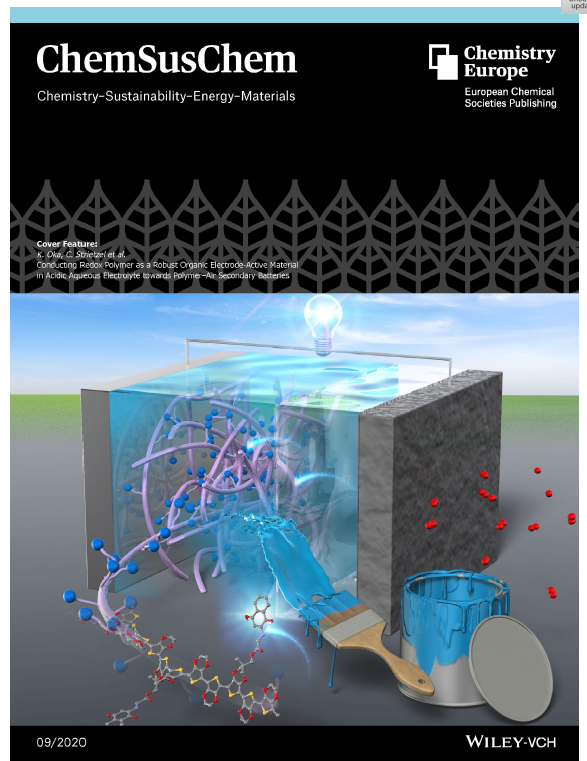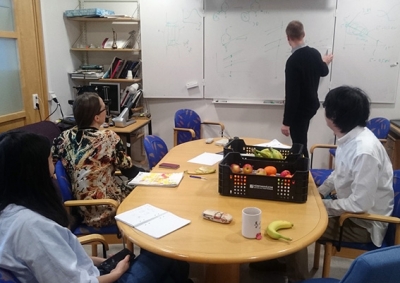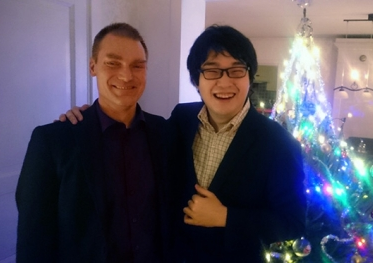Joint Supervision Program: Report from Participant-Uppsala University
Waseda University’s School of Advanced Science and Engineering has concluded an agreement with Uppsala University (Sweden) to implement the Joint Supervision Program (agreement concluded in 2017). Mr. Oka, who participated in this program and benefited from the joint research guidance at Uppsala University, spoke of his experience in Sweden. He visited Uppsala University three times from 2018 to 2019, and spent about half a year in Sweden in total.
In June 2019, under Professor Martin Sjödin at the Ångström Laboratory of Uppsala University, I engaged in research on the synthesis and characterization of conjugated redox polymers that combine conjugated polymers and redox polymers, and on organic batteries.
Results of joint research
During this stay, I participated in joint research on batteries composed of organic materials (J. Am. Chem. Soc., 2017, etc.), which Professor Sjödin is conducting world-leading research on.
In this research, we synthesized conjugated redox polymers, which combine poly (3,4-ethylenedioxythiophene) as the conjugated polymer (PEDOT) and a quinone molecule as the redox unit, with proprietary molecular design by Professor Sjödin’s group. We characterized the redox behavior and surface structure by using Uppsala University’s proprietary electrochemical measurement devices, spectroscopic instruments, and microscopes, and got the basic data on their electrochemical properties for the first time. We fabricated and demonstrated air secondary batteries, manganese secondary batteries, and lithium-ion secondary batteries based on a new concept, using conjugated redox polymers as the electrode and aqueous solution as the electrolyte. I was able to participate in daily discussions with Professor Sjödin and other researchers in his group, and published three papers in total on these research results. Recently, there has been a rise in the number of research reports on next-generation batteries with a low environmental burden, so this research is likely to have a highly significant ripple effect on society.

Oka, C. Strietzel, R. Emanuelsson, H. Nishide, K. Oyaizu, M. Strømme, M. Sjödin, Electrochem. Commun., 105, 106489, 2019.
Oka, C. Strietzel, R. Emanuelsson, H. Nishide, K. Oyaizu, M. Strømme, M. Sjödin, ChemSusChem, 13(9), 2280–2285, 2020.*Selected as the cover
Oka, R. Löfgren, R. Emanuelsson, H. Nishide, K. Oyaizu, M. Strømme, M. Sjödin, ChemElectroChem, 7(15), 3336–3340, 2020.
Living environment in Uppsala
Uppsala, where I stayed at during this program, is the fourth largest city of Sweden. It is located about 20 minutes by train from Sweden’s largest airport, Stockholm Arlanda Airport, and is constantly bustling with many tourists on both weekdays and weekends during summer. My accommodation was located about 40 minutes by bus from Uppsala University. There was about one bus every five minutes, so I was very fortunate to be in that environment and did not experience any inconveniences. While the Swedish language is the official language of Sweden, everyone in the street speaks fluent English. Hence, while I had been anxious about the language barrier, this did not pose any problems in the least. I was able to make progress in the research in this wonderful environment.


